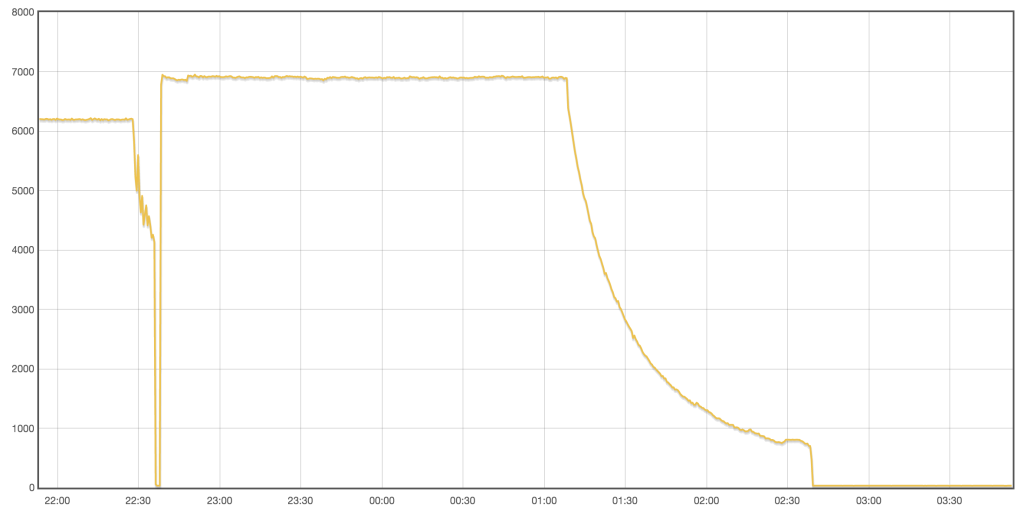Ever wandered how much overhead does the charging process have? Yesterday I've charged my i3 yesterday from 7 to 100% using my 32A EVSE in less than 4h:

Even at 100% it was still drawing about 600W of energy, just to cover it's charging process.
To validate my result - the whole charging consumed 20.2kWh, my battery has max capacity 19.2kWh so from 7 to 100 it needed about 17.8kWh of energy. That leaves about 2.4kWh of overhead, which divided by almost 4h of charging time confirms my findings.
That also shows why L1 charging is so inefficient. Your EVSE will allow the car to draw only 12Amps which is 1.4kW. If you car is wasting 0.6kW just to cover it's overhead your battery is charged at an astounding rate of about 0.8kWh. This also suggests that simply going to L1 5-20 EVSE capable of delivering 1.9kWh should cut your charging time almost in half. Which I'm going to confirm later when I find myself a 5-20 plug.

Even at 100% it was still drawing about 600W of energy, just to cover it's charging process.
To validate my result - the whole charging consumed 20.2kWh, my battery has max capacity 19.2kWh so from 7 to 100 it needed about 17.8kWh of energy. That leaves about 2.4kWh of overhead, which divided by almost 4h of charging time confirms my findings.
That also shows why L1 charging is so inefficient. Your EVSE will allow the car to draw only 12Amps which is 1.4kW. If you car is wasting 0.6kW just to cover it's overhead your battery is charged at an astounding rate of about 0.8kWh. This also suggests that simply going to L1 5-20 EVSE capable of delivering 1.9kWh should cut your charging time almost in half. Which I'm going to confirm later when I find myself a 5-20 plug.




